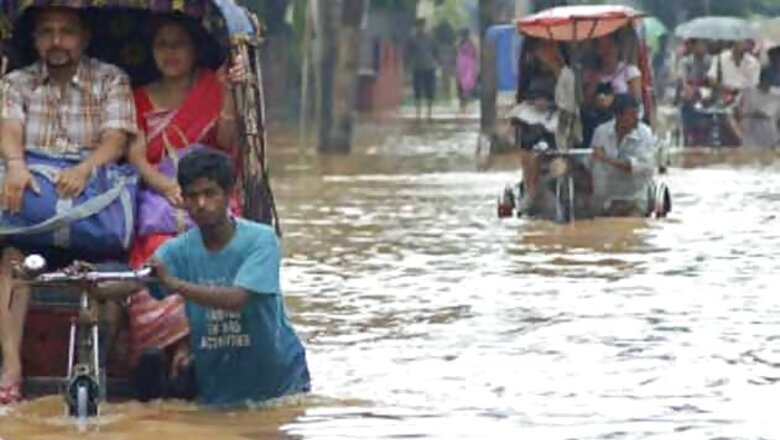
views
New Delhi: Incessant monsoon rains have triggered major flooding in northeastern India, submerging hundreds of villages and forcing thousands of people to abandon their homes in search of higher ground, say officials and aid workers.
The heavy rains in the tea and oil-rich Assam have forced burgeoning rivers, including the mighty Brahmaputra, to burst their banks affecting 865,000 people in about 1,500 inundated villages.
Aid workers say 11 of Assam's 27 districts have been severely affected, including Kokrajhar, Lakhimpur, Baksa and Bongaigaon, and poor farming communities have been the worst-hit.
The fast-flowing waters have also eroded banks and dykes and swelling rivers are threatening to inundate other parts of the state, including parts of Dibrugarh, Assam's second largest city.
"People have been moving with whatever possessions they can take to safer areas. Most are currently in make-shift shelters with little help," said Mrinal Gohain, ActionAid's manager for India's northeast region.
"These communities, who rely on rice cultivation for their survival, will see 60 to 80 percent crop damage as a result of the irregular monsoon that we have had this year," he said, adding that Assam's pre-monsoon showers were 80 percent higher than normal this year.
Weather officials are forecasting more rainfall in the coming days.
Government officials say water purification tablets, medicines and food are being distributed in some areas, but there are currently no plans to open relief camps until an on-going survey of the affected areas has been completed.
"So far, all the rivers in the state are observing a rising trend," said Prithvi Majhi, Assam's minister for water resources. "We have instructed private owners of country boats to cooperate with district authorities in the distribution of relief materials."
Flood-prone
India usually experiences monsoon rains from June to September, which are vital for its agriculture. But in states like mountainous Assam, the rains frequently cause landslides and flooding that devastate crops, destroy homes and trigger diseases such as diarrhoea and dysentery.
Experts say decades of mass deforestation have led to soil erosion where sediment is washed downstream from mountainous areas. It ends up in rivers where it builds up on the river bed, raising the level of the water far higher than normal.
Poor management in regulating water levels in dams has also led to huge volumes being released into rivers over a short period with no warning to populations, they add.
Local populations also say corrupt officials have siphoned off funds meant for flood risk reduction projects and resulted in shoddy construction of embankments which are regularly breached.
Last year, nearly 1,000 people were killed by severe flooding in India, while tens of thousands more lost their homes and saw large swathes of their farmland devastated, according to the International Federation of the Red Cross and Red Crescent Societies.


















Comments
0 comment